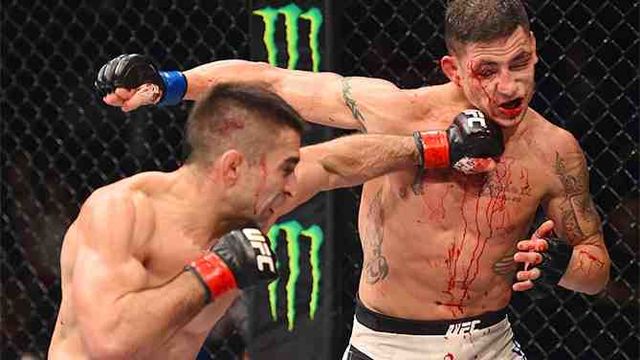Wing Chun and Mixed Martial Arts: Applying Traditional Techniques to Modern Fighting
By Maurice Novoa a master under the Yuen Kay Shan, Ip Man and Pan Nam lineages.
Introduction:
Welcome, fellow martial arts enthusiasts! As an experienced martial arts instructor with over 30 years of training in Wing Chun Kung Fu, I’m excited to share my insights on the application of traditional techniques in the dynamic world of Mixed Martial Arts (MMA). If you’re between the ages of 25 and 35 and have a passion for martial arts, this article is for you. Let’s dive in and explore how Wing Chun’s principles and techniques can be adapted and utilized in the context of modern MMA.
Understanding the Fundamentals
Before we delve into the integration of Wing Chun and MMA, let’s establish a solid foundation by understanding the fundamentals of the style. This Chinese martial art emphasizes efficiency, economy of motion, and close-quarters combat. Its principles revolve around centerline theory, which focuses on targeting the opponent’s vital areas along the imaginary centerline of the body.
In MMA, where versatility is crucial, Wing Chun’s principles can be particularly effective. By maintaining a strong centerline position and utilizing efficient striking techniques, practitioners can find success in the ring or cage.
Adaptation of Wing Chun Techniques for MMA
Striking Techniques
Wing Chun’s striking techniques form the backbone of its combat effectiveness. In MMA, punches, kicks, and elbows play a vital role in a fighter’s arsenal. Wing Chun’s chain punches, delivered with rapid-fire precision, can be seamlessly integrated into combinations, catching opponents off-guard and maintaining a constant barrage of strikes.
I remember a time when I was sparring with a fellow MMA enthusiast. As he threw a wide hook, I instinctively parried his strike and followed up with a quick chain punch, catching him off-balance. The speed and accuracy of Wing Chun’s chain punches can be a game-changer in MMA bouts.
To add versatility to your striking, incorporate low kicks and high kicks into your training. Wing Chun’s focus on balance and stability will help you deliver powerful and accurate kicks while maintaining a solid defensive posture.
Defense and Counterattacks
Effective defense and counterattacks are essential in MMA, where opponents are skilled in various disciplines. Wing Chun’s trapping techniques, such as Lap Sau (pulling hand), can be invaluable in close-quarters combat. By trapping an opponent’s limb and redirecting their strikes, you can create openings for devastating counterattacks.
During one of my MMA fights, my opponent attempted a powerful roundhouse kick. Using trapping principles, I deflected his leg to the side, disrupting his balance. I swiftly capitalized on the opening, launching a counterstrike that secured me the victory.
Footwork and Mobility
Footwork and mobility are vital in MMA, allowing fighters to create angles, evade strikes, and set up effective attacks. Wing Chun’s unique footwork, characterized by pivoting and lateral movements, can provide a strategic advantage in the octagon.
By blending footwork with takedowns and grappling transitions, you can seamlessly navigate different ranges of combat. The ability to quickly change direction and maintain stability will keep you one step ahead of your opponents.
Training Strategies for MMA
To excel in MMA, it’s essential to cross-train in various martial arts disciplines. While Wing Chun provides a solid foundation, complementing it with Brazilian Jiu-Jitsu for ground fighting, Muay Thai for striking, and wrestling for takedowns will make you a well-rounded fighter.
During my own training journey, I realized the importance of sparring and drills that specifically incorporate Wing Chun techniques into MMA scenarios. By practicing specific drills and integrating them into MMA training sessions, you can enhance your timing, precision, and adaptability in real-time combat situations.
Mindset and Mental Preparation
MMA is as much a mental game as it is a physical one. Wing Chun’s philosophy of calmness and focus can be invaluable in staying composed and making calculated decisions under pressure.
Developing a resilient mindset is crucial in MMA. Embracing principles of adaptability and fluidity allows you to adjust your strategy on the fly, making the most of any situation that arises in the heat of battle.
Conclusion
In conclusion, the integration of traditional Wing Chun techniques into modern MMA can offer significant benefits to fighters looking to expand their skill set and approach. By understanding the fundamentals of Wing Chun, adapting striking techniques, incorporating effective defense and counterattacks, refining footwork and mobility, and embracing the right mindset, you can enhance your performance in the cage or ring.
Remember, successful application of Wing Chun in MMA requires dedication, discipline, and a willingness to adapt. Embrace the spirit of exploration and continue refining your skills. Whether you’re a Wing Chun practitioner venturing into MMA or an MMA enthusiast seeking to enhance your arsenal, the marriage of these two disciplines can lead to exciting possibilities.
So, lace up your gloves, step into the gym, and unleash the power of Wing Chun in the realm of Mixed Martial Arts. Embrace the challenges, learn from every experience, and continue to evolve as a fighter. The journey is long, but the rewards are immeasurable.

